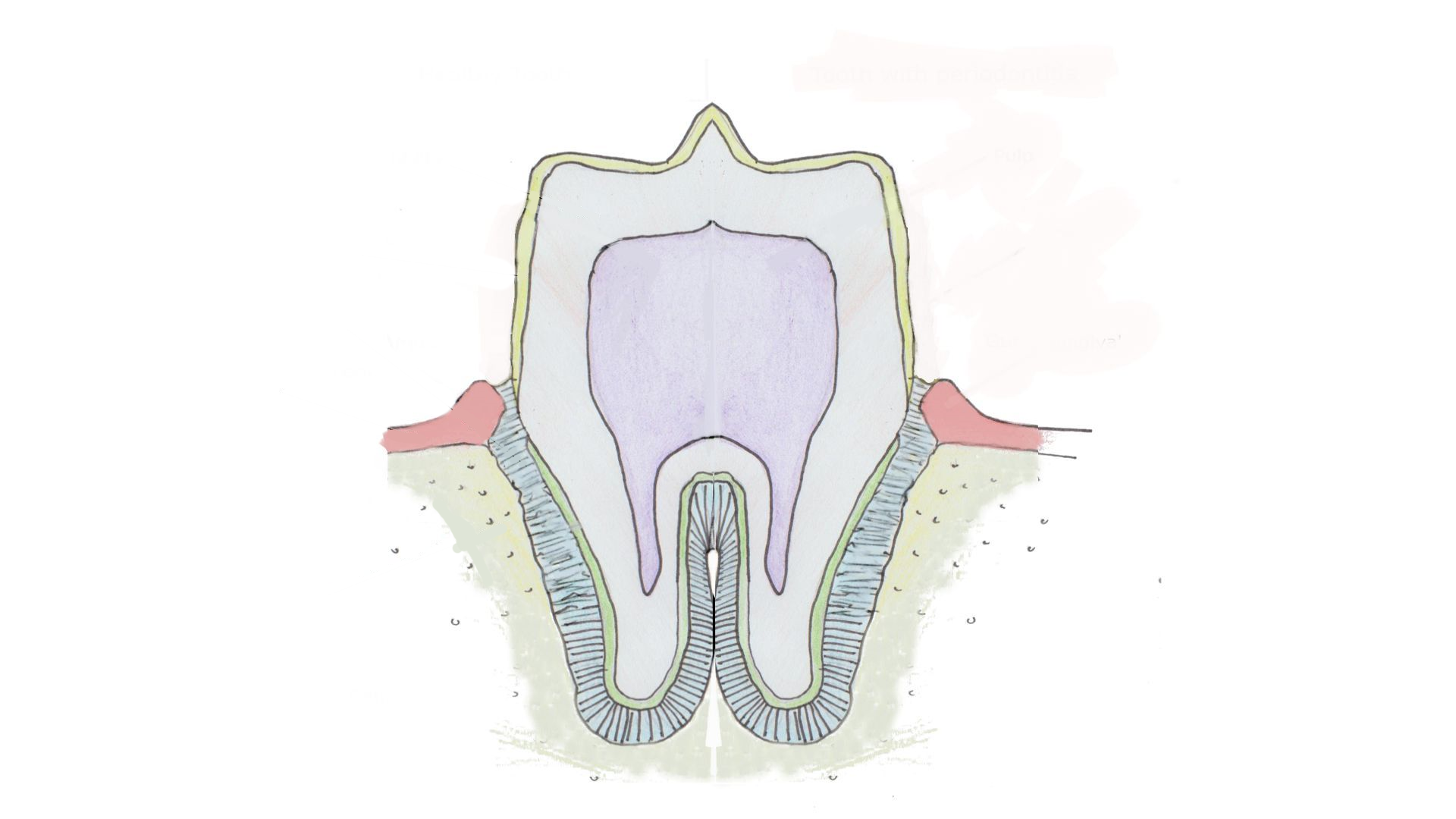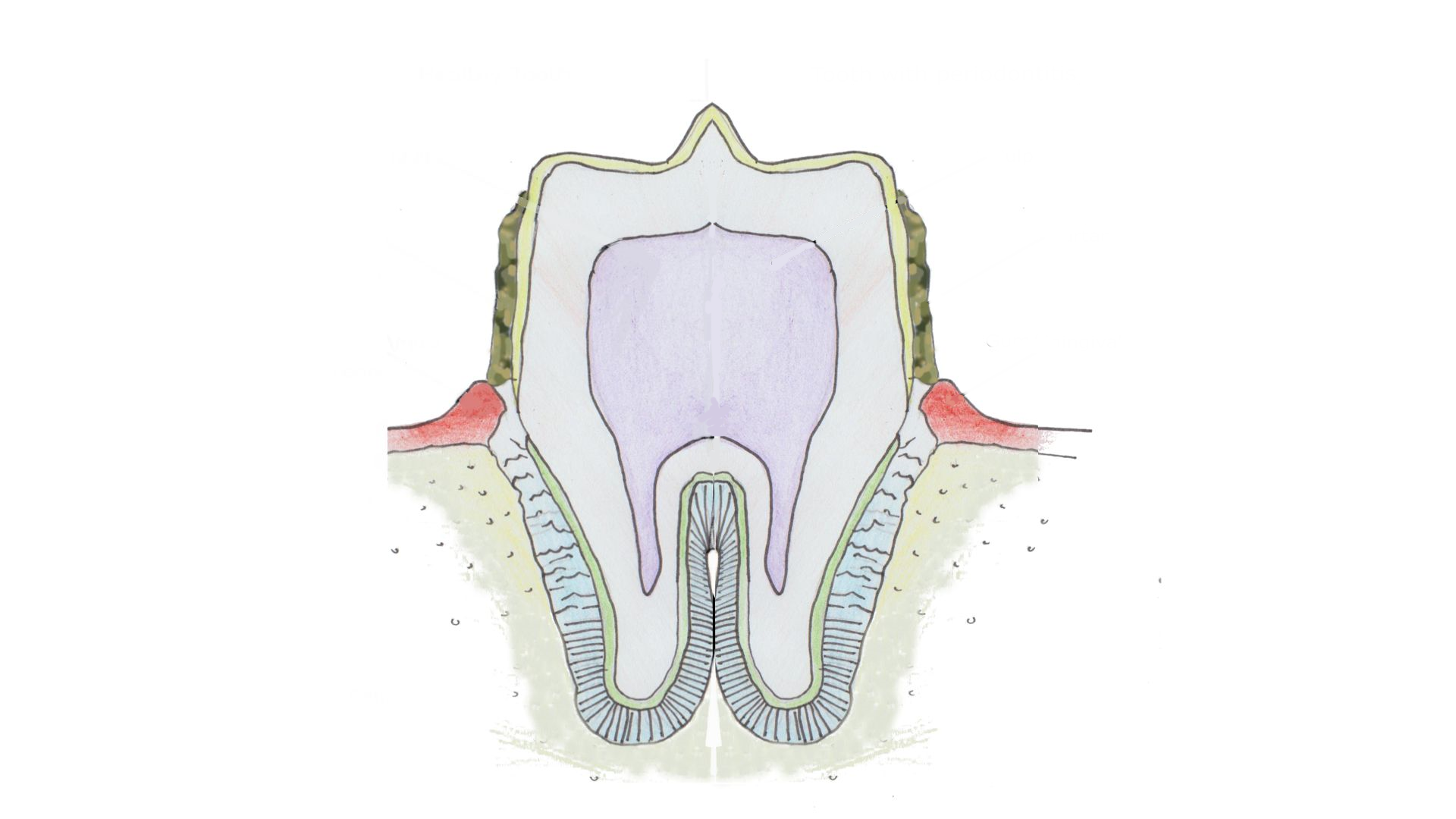What Is Periodontal Disease?
In this section, you’ll find out what periodontal disease is and what causes it.
What is periodontal disease?
Periodontal disease describes the degeneration of a dog’s teeth, gums, and other associated structures due to bacteria, tartar formation, and inflammation.
Use the slider on the image below to see the changes that occur in a healthy dog’s teeth and gums due to periodontal disease


Click on the image hotspots below to see how each area is affected by periodontal disease
What causes periodontal disease in dogs?
The images and text below show the development of periodontal disease. View each hotspot in sequence to follow the journey
What makes your dog more likely to have periodontal disease?
Click to expand the headings below and see what makes a dog more likely to have periodontal disease at a younger age
Breed
Small-breed dogs are statistically more likely to be affected by periodontal disease than large-breed dogs. In a study of dogs aged 1 to 4 years, 53.7% of small-breed dogs had periodontal disease, compared to 21.4% of large-breed dogs, according to a study.
This is mainly due to overcrowding (lots of teeth in a smaller space) and malocclusion (poor alignment of the teeth of the upper and lower jaw). Another study confirmed that small breeds are more likely to have malocclusion, which can lead to overcrowding.
According to research, brachycephalic (short-nosed) dogs are 1.25 times more likely to get periodontal disease compared to mesocephalic (medium nose length) breeds.
Conformation
Regardless of your dog’s breed, if they have a short nose or poorly aligned teeth, this means more gaps where plaque can accumulate, leading to periodontal disease.4
Overcrowding
Whether you have a chihuahua or a labrador, if their teeth are overcrowded, they’re more likely to be affected by periodontal disease. This is because the gaps between your dog’s teeth are a breeding ground for bacteria which leads to plaque formation, as confirmed by studies.
Age
Dogs aged 8 years or more are three times more likely to have periodontal disease, according to a study. This is because bacteria levels will increase over time, especially if toothbrushing or other homecare options aren’t feasible.
Summary
Your dog’s mouth is full of bacteria – that’s completely normal. However, without a dental hygiene routine, the bacteria form a coating, known as a biofilm, that covers the teeth. This biofilm causes inflammation of the gums and damage to the structures that stabilise the tooth. The biofilm also allows plaque, and then tartar to form, which worsens the damage to the teeth and gums.
Factors such as trauma, diet, and the size and shape of your dog’s mouth and jaw will affect how likely they are to develop severe periodontal disease.
Key Takeaways
Periodontal disease refers to the damage to the teeth and surrounding structures from infection and inflammation caused by oral bacteria and the formation of plaque and tartar.
